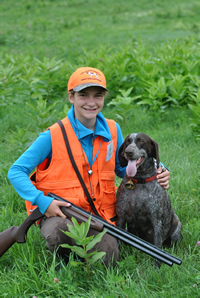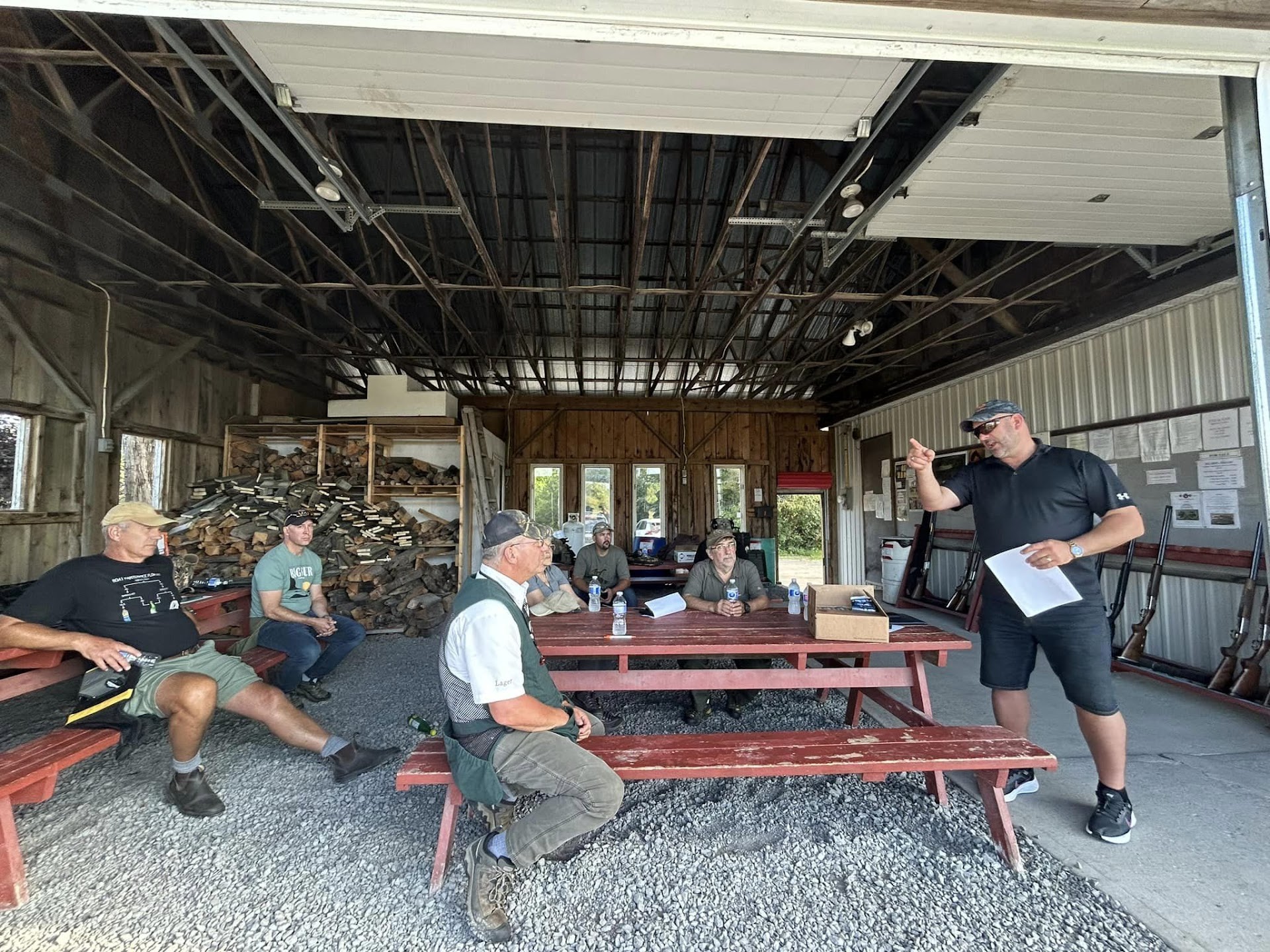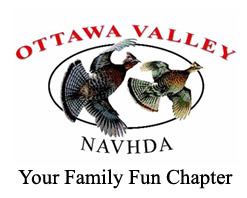Safety first

When it comes to dog training or hunting safety is the primary concern. A few points to remember:
- Use a break action shotgun only.
- Be familiar with your gun, safety, trigger and chokes
- be aware of mechanical or inertia triggers.
Remember: do not shot if shoot is unsafe due to people, dogs or property.

Every year the club organizes a couple of gunner training events, consider participating. Gunning in a NAVHDA event is not competitive gunning, the gunner is not the athlete: the dogs are! Gunners role is helping the dog to achieve its full potential. Safety is the primary concern; gunning follows a precise protocol you need to master the rules, goals and rationales. It is something you will learn with the exercise and practice while gunning in training events.
Be a gunner, be a good gunner

Gunning is an important part of working with a bird dog, and the ‘Gunners’ are an asset, to any training day or test day.
Having a capable gunner can have a dramatic impact on the efficiency of a club training day, and on some of the scores that are attained during our tests.
In a typical NAVHDA training day, there can be lots amount of dogs and handlers congregating and hoping to participate in the day’s events. This can make for a very busy schedule and as with any training day, a strategic goal should be to reduce bottlenecks and to maintain a great use of time and resources through out the day. You will want to ensure that there is always ripples in the water on the training pond, and feet on the ground in the training field.
Field work can be both labour and time intensive and it is often the area where wait times and delays can occur. A capable set of gunners is an important part in maintaining efficiencies in the field. Having a group of people that understand how to safely dispatch birds in flight and to do so safely with the proper protocol and etiquette, can increase enthusiasm and reduce fatigue and wait times throughout the day.
During a test day, a capable gunner can have a big impact on the success that is achieved. Knowing what to do before, during, and after a shot can help the dog, the handler, the judges, and the Field Marshal alike.
The following tips are a must know for all handlers, gunners, and prospective gunners alike.
OVNAVHDA: WING SHOOTING and GUNNERS ETIQUETTE
WING SHOOTING:
Licensing
- Have the appropriate license for your area and activity.
Gun Fit
- Be sure that your gun fits you. Drop at comb will be your most important measurement.
- Your dominant eye should be unobstructed.
Stance
- Feet should be shoulder width apart and a gun in a safe position should point in the general direction of fire.
Mount
- Gun should rest firmly in the pocket of your shoulder.
- Back elbow should be slightly elevated.
- Cheek bone should be connected to the stock.
Hold Point
- Hold your gun about a 1/3 of the way from where the target will appear and where you intend to shoot it.
Eye Position
- Start your eyes with a soft vision between the target and the end of your gun at the hold point.
- Focus only on the target and be aware of but do not look at the barrel of your gun.
Lead Types:
- Understand your lead types: sustained (preferred), swing through, and pull away.
- Sustained lead is your preferred method, it allows for easier acquisition of the target.
- Sustained lead will look like a successful traffic merge.
Follow Through:
- Stay in the gun and follow the target to the end of your swing or until it hits the ground.
- “When gunning, do not follow the bird to the ground with your follow through.”
- keep your gun above the potential level of any jumping dog.
Proficiency:
- You should be able to hit 60-70% of your targets at a skeet or trap field before you act as a gunner for a bird dog.
GUNNERS ETIQUETTE:
Firearms and Ammunition:
Use a break action shotgun only.
- Be familiar with the firearm operation: safety, triggers, chokes.
- Know if the safety automatically engages.
- Understand if the firearm has mechanical or inertia triggers.
- Make certain that your chokes match your range.
- Use Target load 7.5 or 8 shot for most training situations.
Before the Field:
- At a test ask the judge, at a training day ask the handler how to handle bumped birds or dogs that break on the flush.
Entering the Field:
- Be ready, have your shells in your hand with your gun open.
Dog on Point:
- Take position direction from handler or judge and load your firearm.
- Work as a team and listen to your leaders for their preferred position for you.
Finding the Bird:
- Gunners should be in line with the handler when they walk up field to locate a bird.
- If asked to move while firearm is loaded, please ensure your safety is on.
- If asked to help locate a bird, first unload firearm.
The Shot:
- Look for 25-30 yards shots to minimize bird damage and make for good retrieves.
- Stay in your shooting lane and only shoot from the center of the handler to your side.
Safety Shots:
- Do not shoot if shot is unsafe due to people, dogs, or property.
- Be prepared to shoot flushed birds at the direction of the judge or handler based on pre field entry conversation.
Post shot retirement:
- Let the handler know that the bird is down. Ask ahead of time how they wish to be informed that a bird was hit or missed.
- Maintain muzzle control and stay still until dog is released, and past you.
- Open firearm and remove shells and prove safe with an open gun.
- Turn away from downed bird.
- Walk slowly away from retrieve to be sure you are not between the dog and the handler.
- Stay still until retrieve is complete.
Post Retrieve:
- Collect bird from judge and add it to your bird bag.
- Pick up hulls if required.
With this information in hand, you now can step up and ask to learn how to a gunner for your club. If you are already a capable gunner then use this this material as a part of your information to help recruit a new gunner to your club. A great video about “Wingshooting Safety – Bird Hunting Tip”:
Wingshooting Safety – Bird Hunting Tip
